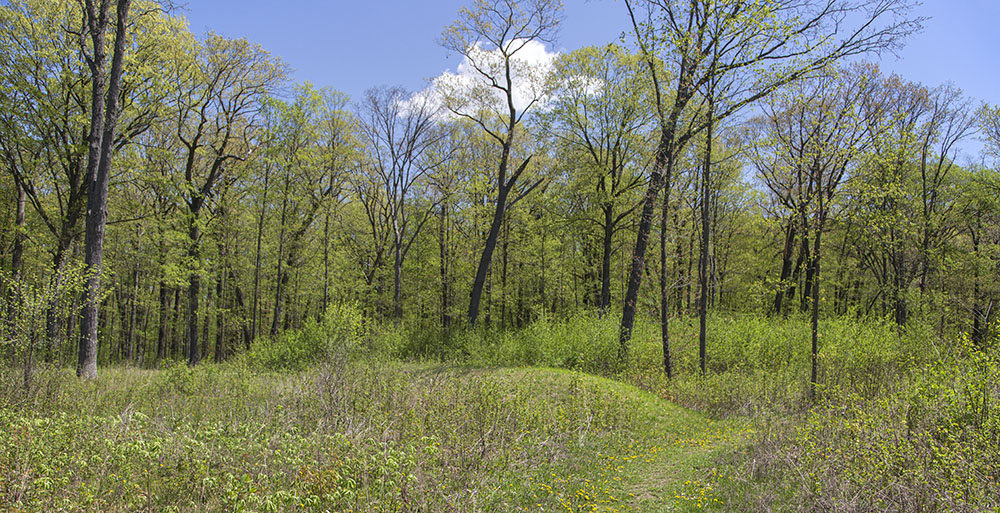
Lizard Mound State Park: A Place Apart
May 18, 2022 | Topics: Places
By Eddee Daniel
With a guest contribution from Milwaukee Journal Sentinel’s Chelsey Lewis
I expected to see mounds. But Lizard Mound State Park was also full of unexpected surprises. The day was not simply warm and sunny; I felt sensations far more profound than that. From the parking lot, shaded by newly bursting foliage, I walked through a narrow screen of tall trees, emerging into a vast open meadow. Sun poured down with an almost physical presence into this exalted, windless space. It felt like entering a cavernous cathedral. I felt, almost overwhelmingly, peaceful.

The mounds were not immediately evident—not visibly. But I had to wonder how much of the tranquility I was feeling was, even then, due to their hidden presence in this sacred landscape. For although the open, sun-soaked meadow, ringed all around by a screen of radiant trees, would in any other context have been reason enough to feel comfort and joy, here I felt an added spiritual dimension. I was immersed in a stillness deeper than the absence of a breeze.
I walked in solemn solitude, steeping in sunshine and serenity.
The mounds themselves, when I reached them, were not surprising. I’ve seen mounds before in other locations. These are characteristically modest earthen forms. While some of them stretch impressively long horizontal distances, they are invariably low to the ground, rising maybe three or four feet. Easy to overlook from afar, even in the open meadow. No, what surprised me was how photogenic they proved to be. (I hope these photographs likewise convince you.) I have tried photographing effigy mounds before with universally disappointing results.
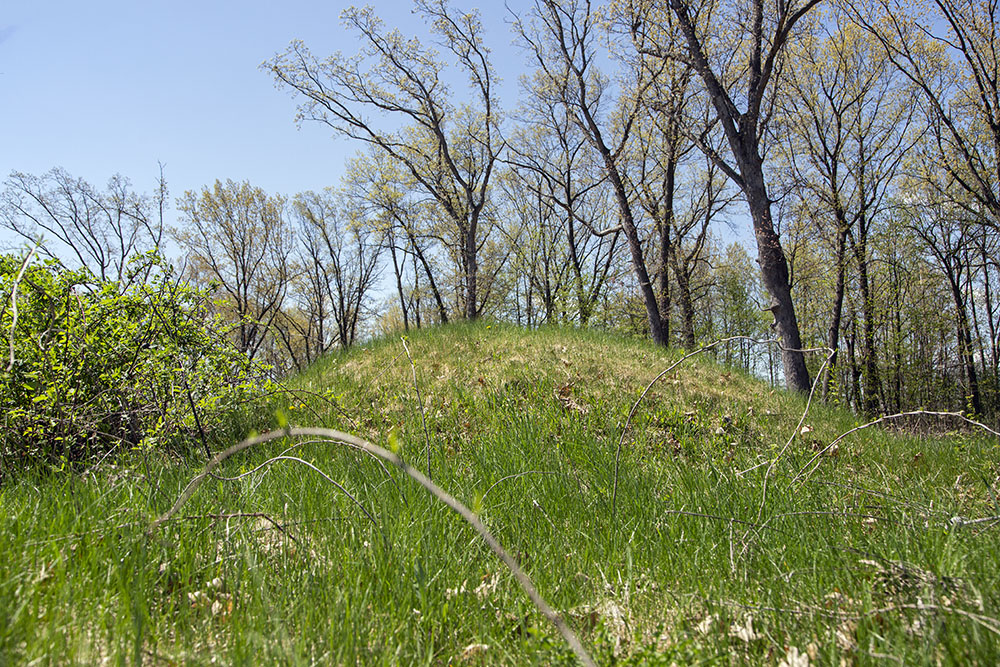
Many of the mounds were out in the open, for one thing. Brush had been cleared from around them. Some bore rotting stumps where, evidently, trees had once been growing. In the woodland I found a number that still have trees rising up to the heavens from out of their tops and sides. It was obvious that without continual care the natural progression of life in the forest would completely obscure them.

Most delightful, I thought, were the wildflowers that had sprouted from the tops and all around most of the mounds. Like silent prayers of supplication or fragrant ephemeral offerings. Reminders—and don’t we whose ancestors are not indigenous to this land need them! —that these are not earthen sculptures. They are sacred burial sites.
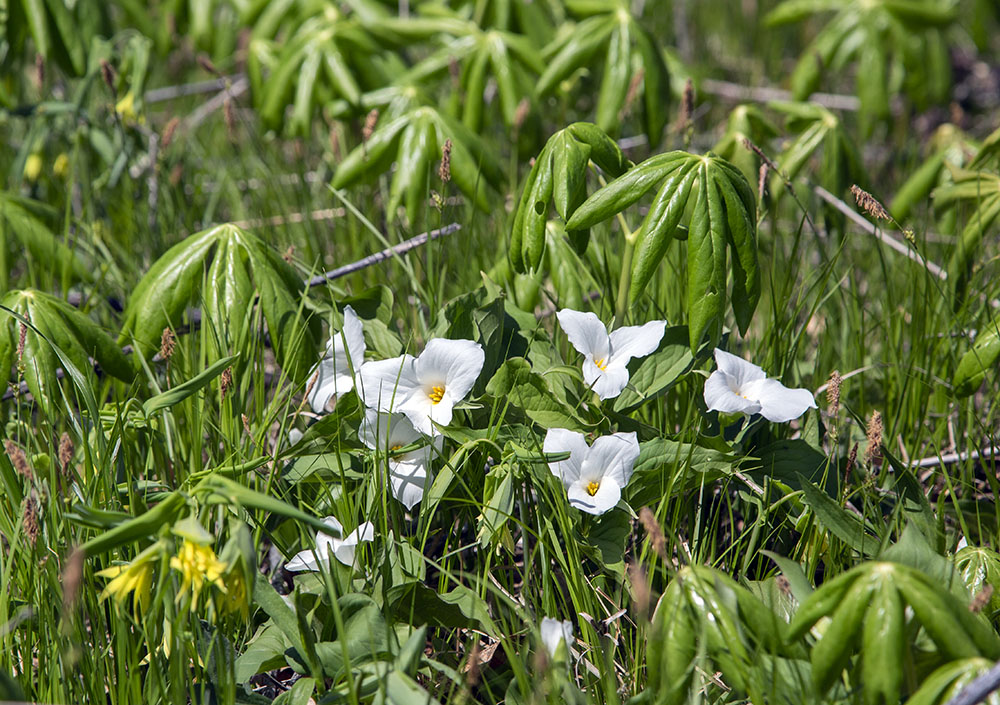
The showy ones stood out the most: white trilliums, mayapples, and plenty of dandelions. But my favorites were the aptly named spring beauties, which are tiny. I had the great fortune to catch these woodland ephemerals at the peak of their gloriously brief existence. Great swathes of them adorned the forest floor in every direction as well as gracing the mounds themselves.
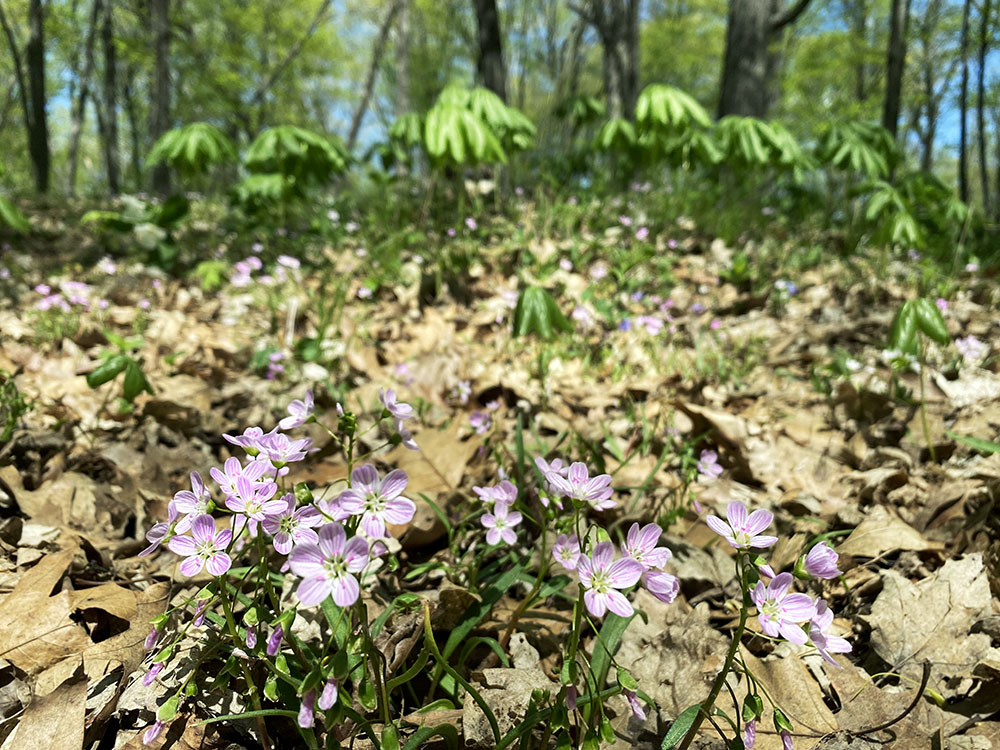
Until last October this was a Washington County Park. But it is now an official state park. That story—and much more about Lizard Mound—was recently published in the Milwaukee Journal Sentinel. Chelsey Lewis, who wrote the story, has graciously allowed me to include an excerpt here:
“Lizard Mound, which is on the National Register of Historic Places, is home to 28 effigy mounds — one of the largest and best-preserved collection of mounds in southern Wisconsin. Effigy mounds are piles of earth sculpted to resemble animals, humans and supernatural beings. They rise anywhere from a few feet to 20 feet above the ground and can stretch horizontally for a few feet or hundreds of feet.

“Typically, they were built near bodies of water or on hilltops and were arranged in patterns that fit with the natural landscape — birds flying along ridge tops, animals with their legs placed downslope, water spirits moving to or from water sources. Effigy mounds were built by Native Americans, known as the Late Woodland people, between 750 and 1200. Most of the mounds contain human remains, but archaeologists speculate they served as more than burial sites.

“‘The effigy mound groups are now considered reflections of an ancient belief and social system. … They functioned as ceremonial centers that were periodically used for a range of social, religious, and political purposes but also as cemeteries,’ write Robert Birmingham and Amy Rosebrough in the second edition of ‘Indian Mounds of Wisconsin.’
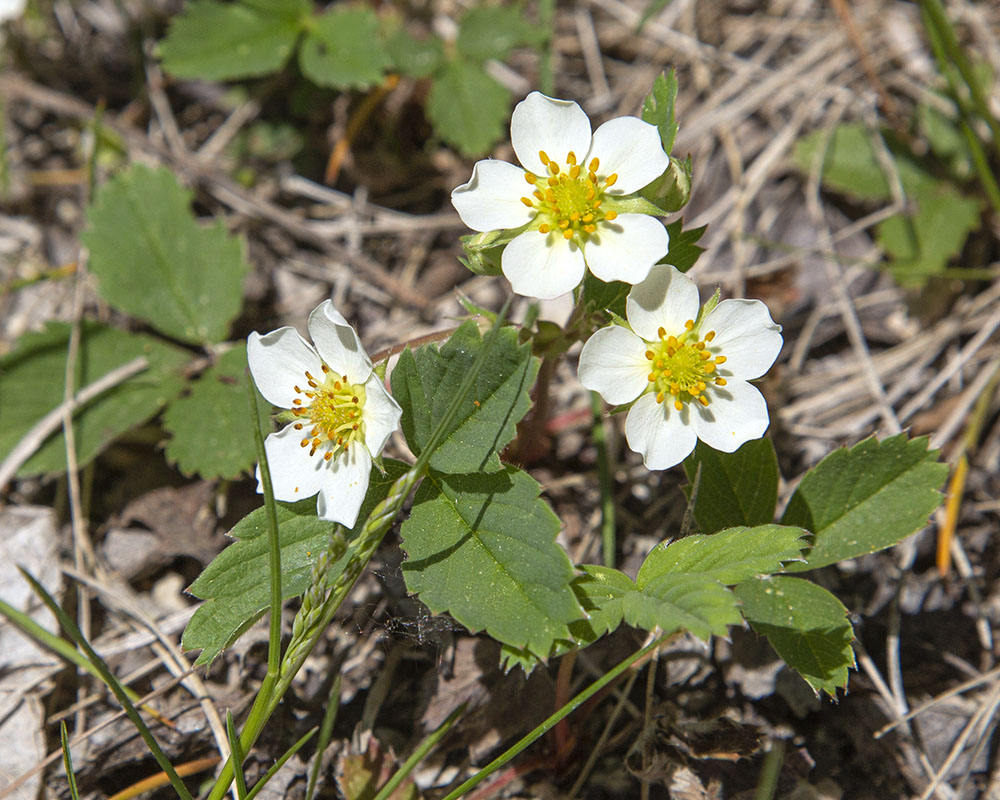
“The Ho-Chunk Nation counts the effigy mound builders among their ancestors and considers the sites to be sacred. ‘(Lizard Mound) is a burial site and a mortuary, and a place that we hold sacred to us and near and dear to our hearts,’ said Ho-Chunk Nation Tribal Historic Preservation Officer Bill Quackenbush.

“While conical and linear mounds appear in other parts of the country, animal- and human-shaped effigy mounds are unique to southern Wisconsin and adjacent states, which makes them an ‘archaeological world wonder,’ according to ‘Indian Mounds.’
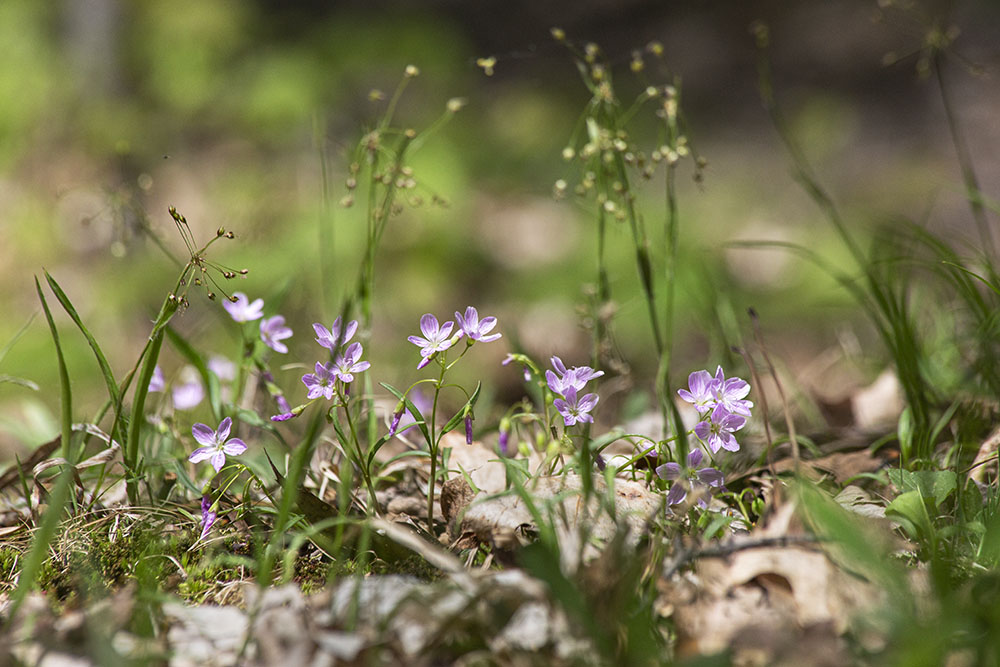
“There were once between 15,000 and 20,000 mounds in Wisconsin (3,000 of which were effigy mounds) — more than in any other equivalent land area in North America. As Europeans settled in southern Wisconsin in the 19th and 20th centuries, they plowed over and dug under the mounds for farms and quarries. More than 80% of the mounds were destroyed, and only about 4,000 remain today. When county surveyors first documented Lizard Mound in the 1800s, the site had 40 mounds, according to Kubicek. Later surveys found evidence that there were once as many as 60 mounds at the site, compared to the 28 that still stand.
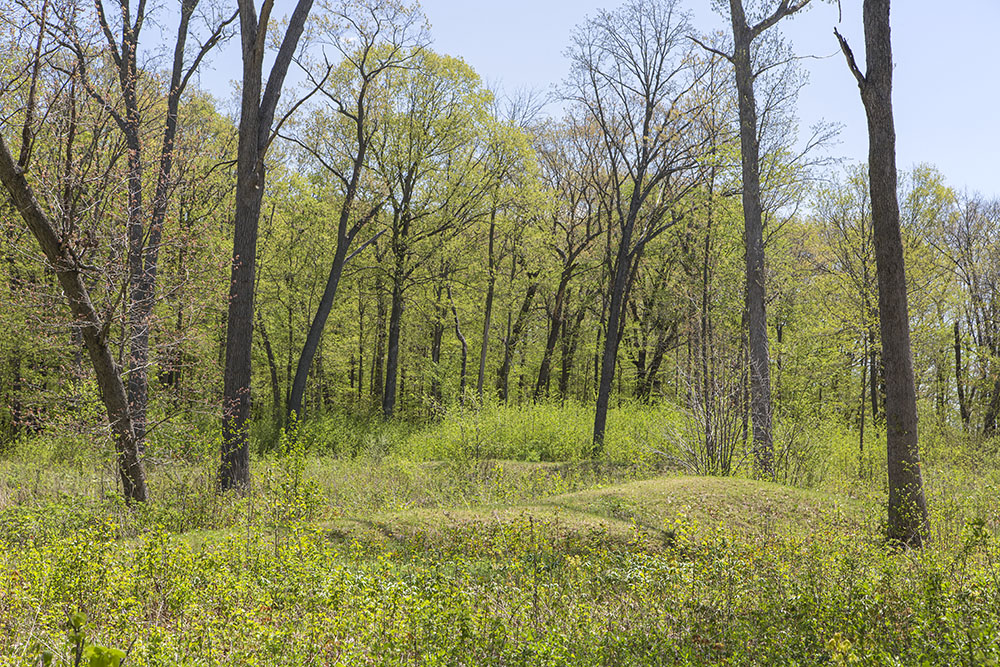
“Among the mounds still standing are conical and linear mounds, and effigy mounds shaped like water birds and long-tailed panthers or water spirits, which early investigators thought were lizards, thus giving the park its name.”
I encourage you to read Chelsey’s entire story on the Journal Sentinel website.

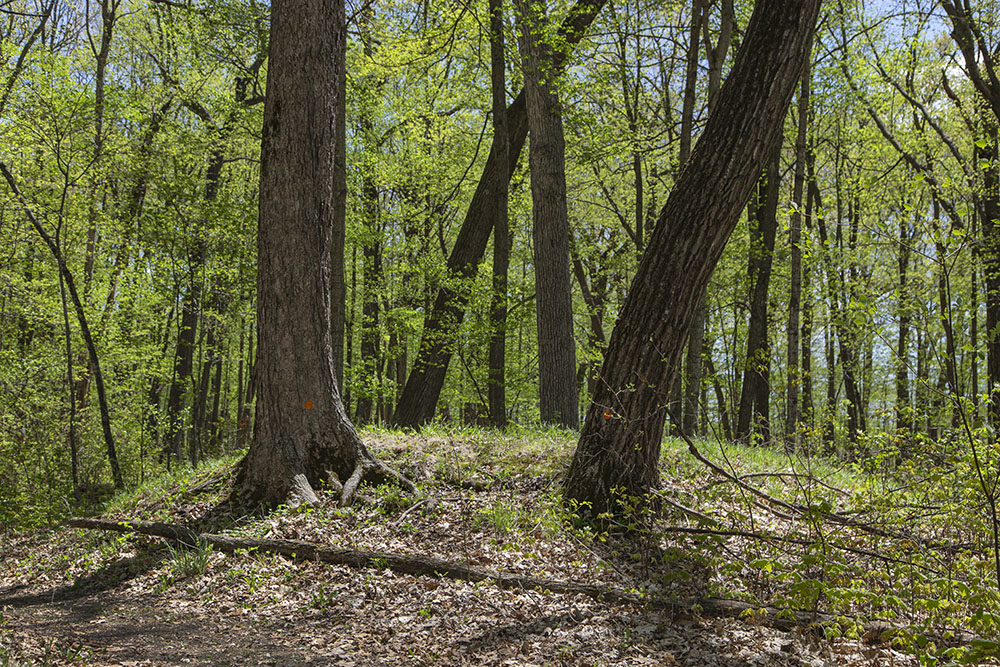
For more information about Lizard Mound State Park go to our Find-a-Park page.
Chelsey Lewis is a travel, entertainment and features reporter for the Milwaukee Journal Sentinel. The excerpt of her story, “Lizard Mound in Washington County will become Wisconsin’s newest state park,” was published on April 14, 2022. It is reprinted here with permission. Eddee Daniel is a board member of Preserve Our Parks.

